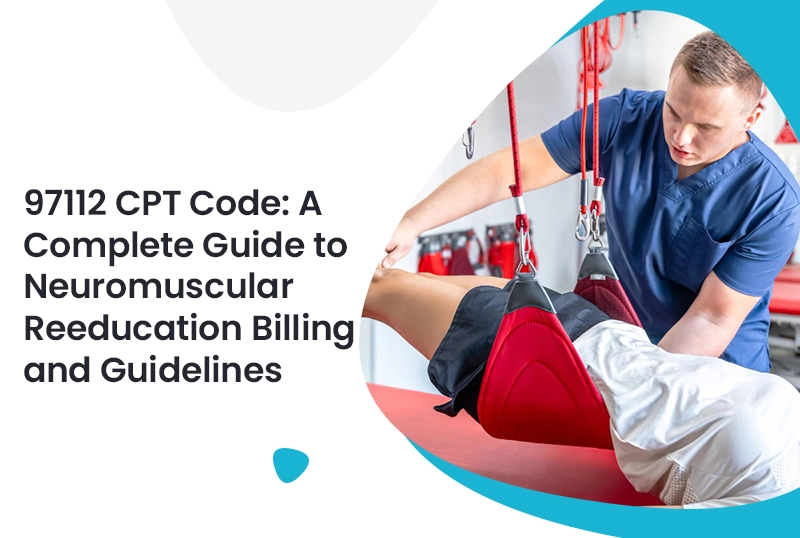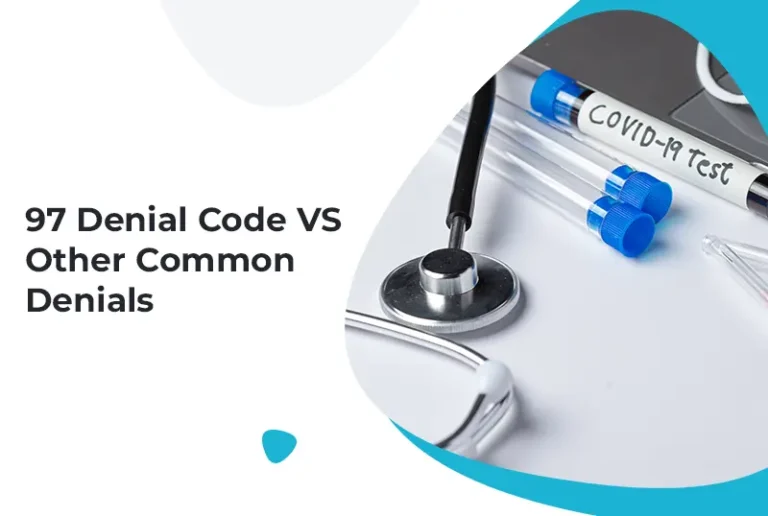When it comes to accurate billing in physical therapy, getting the 97112 CPT code right is non-negotiable. Medical billing service providers know that a single coding mistake can delay payments or cause denials. If you’ve ever found yourself second-guessing how to bill neuromuscular reeducation, you’re not alone.
In this guide, we’ll walk you through what 97112 is, why it matters, how to document it correctly, and ways to avoid the most common billing pitfalls. Ready to feel confident when billing 97112? Let’s dive in.
What is the 97112 CPT Code?
97112 CPT code refers to neuromuscular reeducation therapy designed to restore movement, balance, coordination, posture, and proprioception. If you’re treating patients with neurological injuries, musculoskeletal disorders, or post-surgical impairments, this code becomes a key part of your billing vocabulary.
Key Features of 97112:
- Focuses on retraining muscles and nerves.
- Typically billed in 15-minute increments.
- Requires one-on-one, direct contact with the patient.
Who Benefits from 97112?
You’ll use this code for patients recovering from:
- Stroke
- Brain injuries
- Post-surgery muscle dysfunction
- Spinal cord injuries
- Balance and gait disorders
Think about Mrs. Thompson, a 62-year-old recovering from a mild stroke. Her sessions aimed to restore balance and prevent falls. 97112 was critical in documenting her care.
Read more about: 97535 cpt code, 99417 cpt code, cpt 97140, 97530 cpt code, 97110 cpt code
Billing Guidelines for 97112 CPT Code
You must follow strict guidelines to ensure 97112 claims get paid without issues. This code is distinct from general therapeutic exercise codes like 97110, and documentation should reflect that.
How to Bill 97112 Correctly:
- Document Specific Goals: Example: improve proprioception or postural control.
- Specify Techniques: Balance training, neuromuscular facilitation, or proprioceptive neuromuscular facilitation (PNF).
- Show Progress: Record improvements in coordination or reduced fall risk.
Pro Tip: Always ensure one-on-one patient contact is clear in your notes. Group therapy? Different code.
97112 CPT Code vs. 97110 CPT Code: What’s the Difference?
It’s easy to confuse 97112 with 97110. However, they serve very different purposes.
| Feature | 97112 CPT Code | 97110 CPT Code |
| Focus | Neuromuscular reeducation | Therapeutic exercise |
| Goal | Improve balance, coordination | Increase strength, endurance |
| Patient Population | Neuro or post-surgical patients | Orthopedic/muscle strengthening |
If you’re in doubt, ask yourself, are you retraining muscles and nerves or just improving strength?
Credentialing Services and Their Role
You might be wondering what credentialing services have to do with coding?
Credentialing ensures that you are in-network with insurance companies. Without proper credentialing, even perfect coding can lead to claim denials. That’s why healthcare practices often partner with experts who can manage credentialing alongside billing. Why fight battles with insurance when you can have professionals handle the heavy lifting?
Maximizing Reimbursement for 97112 CPT Code
Billing 97112 correctly can boost your revenue, but that’s only half the story. To truly optimize your earnings, you need to sharpen your documentation and avoid the common traps.
Common 97112 Billing Mistakes:
- Using 97112 for passive modalities like ultrasound or heat big no-no.
- Insufficient documentation, no goals, no progress notes = no pay.
- Misunderstanding one-on-one requirements.
Best Practices for Reimbursement:
- Be Detailed: Always include objective measures (e.g., balance tests).
- Be Specific: Mention the neuromuscular technique used.
- Be Consistent: Tie therapy back to functional goals like walking without support.
Because insurers scrutinize therapy codes heavily, staying sharp here keeps revenue flowing and reduces audit risks.
Impact of Revenue Cycle Management on 97112 CPT Code Billing
A good revenue cycle management healthcare system guarantees that every 957112 session registered generates income, not refused claims. Consider RCM as the financial engine running your practice. From correct coding to simplified claim submission and quick rejection handling, RCM maintains consistent cash flow.
Imagine your RCM operating as it should, claims paid faster, fewer denials, and more time for you to concentrate on patient care, your strongest suit.
Conclusion
Mastering the 97112 CPT code isn’t just about billing correctly it’s about elevating your practice’s efficiency and profitability. By understanding what 97112 covers, documenting carefully, and integrating credentialing and revenue management strategies, you can ensure your neuromuscular reeducation services are properly compensated.
Isn’t it time you turned coding stress into billing success?
FAQs
1. How many units can you bill for the 97112 CPT code?
You can typically bill 97112 in 15-minute increments. Most insurers allow up to 4 units per hour, depending on medical necessity.
2. Is 97112 covered by Medicare?
Yes, but documentation must clearly show the need for neuromuscular reeducation and progress toward functional goals.
3. Can 97112 be billed with 97110 on the same day?
Yes, as long as each code reflects distinct services and time spent is separately documented.
4. What is the reimbursement rate for the 97112 CPT code?
Rates vary by region and insurer, but the national average hovers around $30–$40 per unit. Always check your local Medicare fee schedule.







